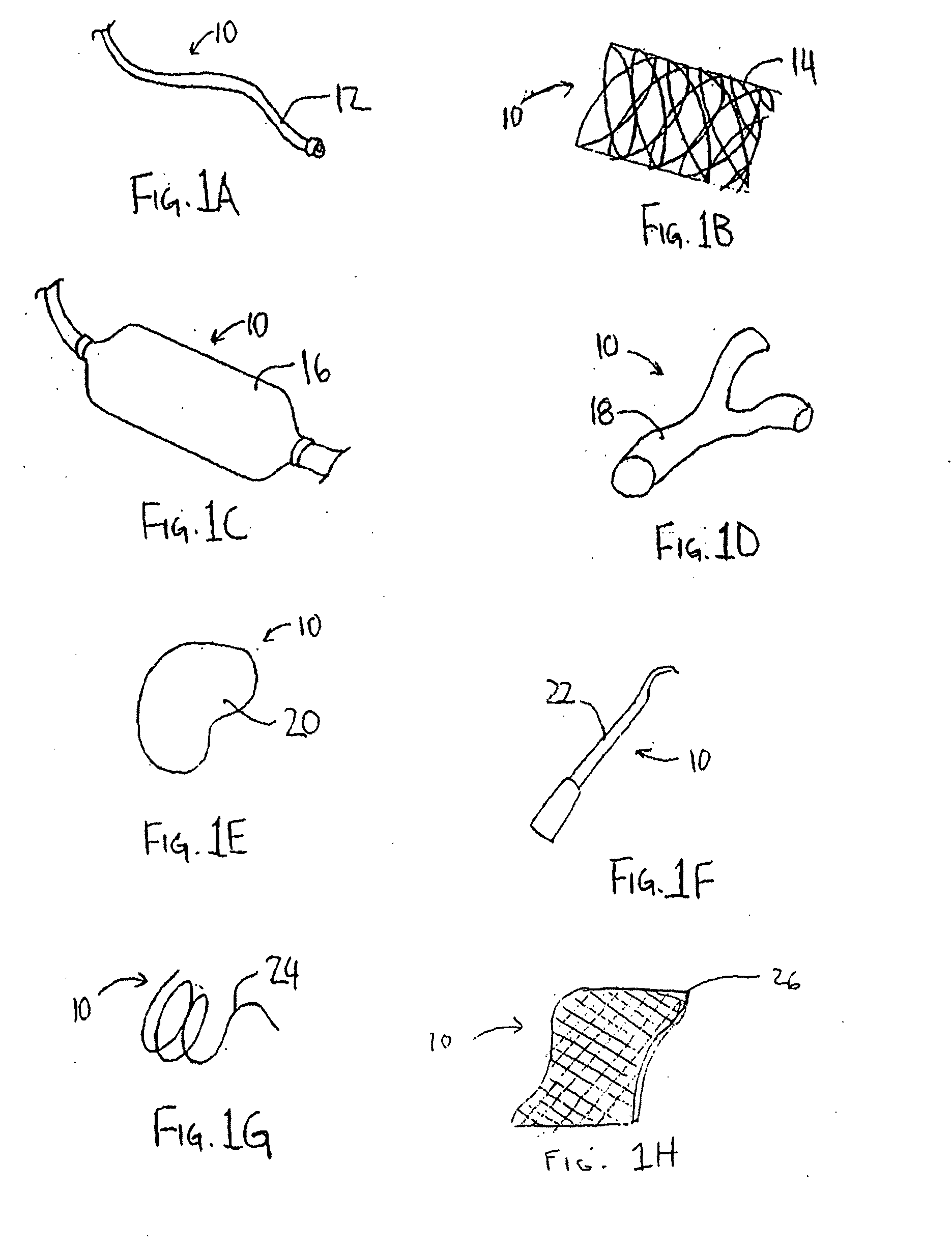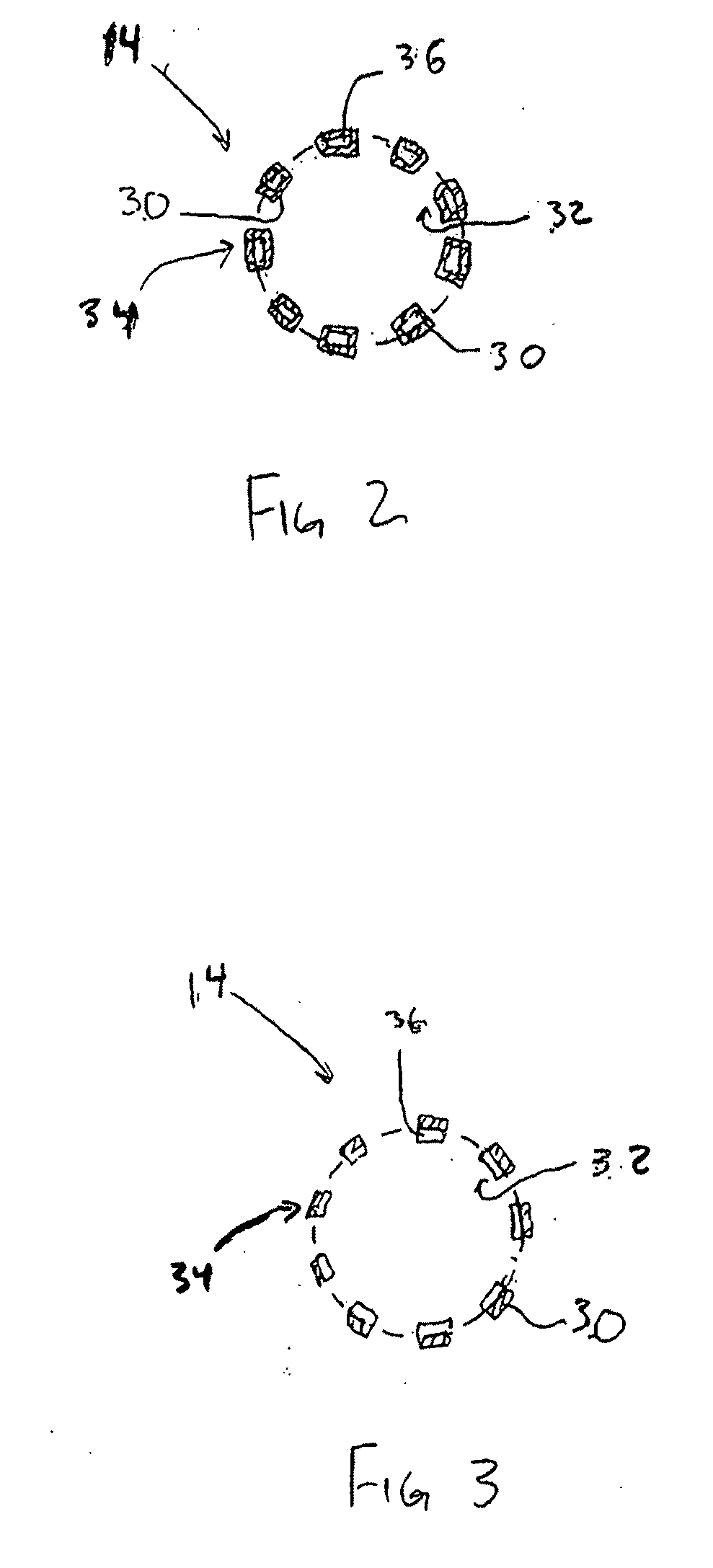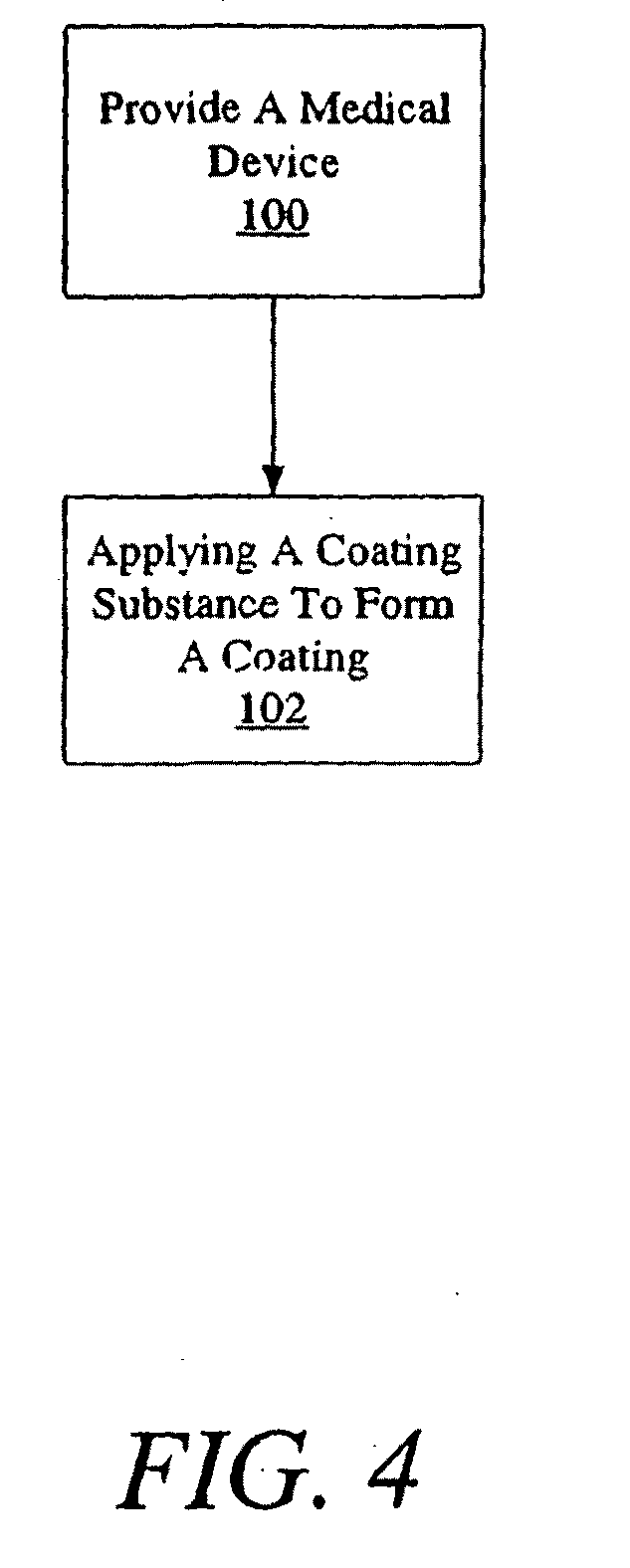Drug delivery coating for use with a medical device and methods of treating vascular injury
a technology of vascular injury and drug delivery coating, which is applied in the direction of prosthesis, catheter, peptide/protein ingredients, etc., can solve the problems of unsatisfactory suppression of inflammation and delay in healing, lack of endothelial cell coverage during delayed healing induced by rapamycin, and uncontrolled proliferation of smooth muscle cells in man, so as to improve the treatment rate and reduce the enzymatic level of calcineurin
- Summary
- Abstract
- Description
- Claims
- Application Information
AI Technical Summary
Benefits of technology
Problems solved by technology
Method used
Image
Examples
example 1
[0091]Rapamycin / Cypher Study: The Atrium Flyer coated stent loaded with low or high dose sirolimus is implanted in rabbit illiac arteries for 28 days. The Atrium Flyer is compared with bare metal stents, the Atrium Flyer coated with ALPHA-3 without drugs, and Cypher™ drug eluting stent. Histomorphic and histopathologic analyses are then performed.
[0092]Atrium Flyer Results
[0093]The results are seen in Table 1, Table 2, Chart 1, Chart 2 and FIG. 8. In general, the Atrium Flyer ALPHA-3 coated stent loaded with low or high doses of sirolimus is well tolerated, producing no adverse reaction. Atrium Flyer stents with coating alone produce minimal tissue reactions and are remarkably similar to uncoated bare stainless steel stents. Furthermore, Atrium Flyer stents coated with sirolimus significantly reduce neoinimal growth at 28 days. In addition, although the reduction in intima is accompanied by delayed healing, Atrium drug coated stents are well endothelialized.
[0094]Atrium Flyer bare a...
example 2
[0099]Methylprednisolone / Cilostazol / Paclitaxcel / Taxus™ The Atrium Flyer stent coated with ALPHA-3 loaded with a high dose sirolimus is implanted in rabbit illiac arteries for 28 days. The Atrium Flyer is compared with the Atrium Flyer coated with ALPHA-3 loaded with low, mid and high doses of paclitaxel, the Atrium Flyer coated with ALPHA-3 and loaded with low, mid and high doses of cilostazol, the Atrium Flyer coated with ALPHA-3 loaded with low, mid and high doses or methylprednilosone, and Taxus™ Express drug eluting stent. Histomorphic and histopathologic analyses are then performed. The results are seen in Table 3, Table 4, and Chart 4.
[0100]Results
[0101]Atrium high dose paclitaxel and sirolimus stents suppresses in-stent neointimal growth at 28 days similarly to the Taxus™ Express stent. The Atrium high dose paclitaxel and sirolimus stents show (greater) arterial healing at 28 days compared with Taxus™ Express. No reduction in neointima was seen with cilostazol or methlyl pred...
PUM
| Property | Measurement | Unit |
|---|---|---|
| viscosity | aaaaa | aaaaa |
| bio-absorbable | aaaaa | aaaaa |
| diameter | aaaaa | aaaaa |
Abstract
Description
Claims
Application Information
 Login to View More
Login to View More - R&D
- Intellectual Property
- Life Sciences
- Materials
- Tech Scout
- Unparalleled Data Quality
- Higher Quality Content
- 60% Fewer Hallucinations
Browse by: Latest US Patents, China's latest patents, Technical Efficacy Thesaurus, Application Domain, Technology Topic, Popular Technical Reports.
© 2025 PatSnap. All rights reserved.Legal|Privacy policy|Modern Slavery Act Transparency Statement|Sitemap|About US| Contact US: help@patsnap.com



